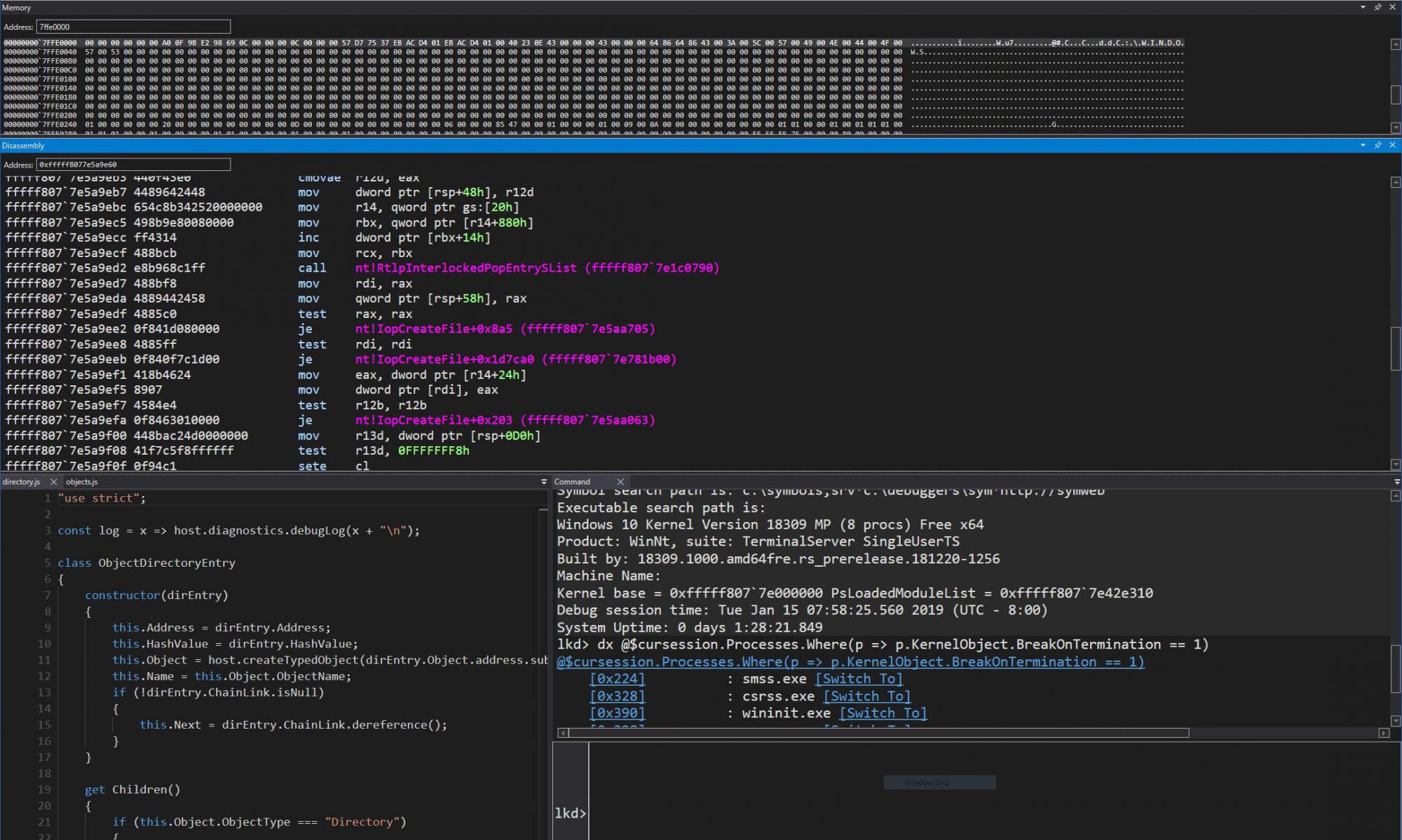Anyone reversing “Windows 8” will now find a non-familiar piece of code, whenever a list insertion operation is performed on a LIST_ENTRY:
.text:00401B65 mov edx, [eax]
.text:00401B67 mov ecx, [eax+4]
.text:00401B6A cmp [edx+4], eax
.text:00401B6D jnz SecurityAssertion
.text:00401B73 cmp [ecx], eax
.text:00401B75 jnz SecurityAssertion
....
.text:00401C55 SecurityAssertion:
.text:00401C55
.text:00401C55 push 3
.text:00401C57 pop ecx
.text:00401C58 int 29h
Or, seen from Hex-Rays:
if ( ListEntry->Flink->Blink != ListEntry ||
Blink->Flink != ListEntry )
{
__asm { int 29h } // Note that the "push 3" is lost
}
Dumping the IDT reveals just what exactly “INT 29h” is:
lkd> !idt 29
Dumping IDT:
29: 80d5409c nt!_KiRaiseSecurityCheckFailure
Which would indicate that Win8 now has a new kind of “ASSERT” statement that is present in retail builds, designed for checking again certain common security issues, such as corrupted/dangling list pointers.
Thankfully, Microsoft was nice enough to document where this is coming from, and I’ve even been told they want to encourage its use externally. Starting in “Windows 8”, if you leave NO_KERNEL_LIST_ENTRY_CHECKS undefined, the new LIST_ENTRY macros will add a line RtlpCheckListEntry(Entry); to verify the lists between operations. This expands to:
FORCEINLINE
VOID
RtlpCheckListEntry(
_In_ PLIST_ENTRY Entry
)
{
if ((((Entry->Flink)->Blink) != Entry) ||
(((Entry->Blink)->Flink) != Entry))
{
FatalListEntryError(
(PVOID)(Entry),
(PVOID)((Entry->Flink)->Blink),
(PVOID)((Entry->Blink)->Flink));
}
}
So what is FatalListEntryError?
FORCEINLINE
VOID
FatalListEntryError(
_In_ PVOID p1,
_In_ PVOID p2,
_In_ PVOID p3
)
{
UNREFERENCED_PARAMETER(p1);
UNREFERENCED_PARAMETER(p2);
UNREFERENCED_PARAMETER(p3);
RtlFailFast(FAST_FAIL_CORRUPT_LIST_ENTRY);
}
At last, we can see where the INT 29H (push 3) seems to be stemming from. In fact, RtlFastFail is then defined as:
//++
//VOID
//RtlFailFast (
// _In_ ULONG Code
// );
//
// Routine Description:
//
// This routine brings down the caller immediately in the
// event that critical corruption has been detected.
// No exception handlers are invoked.
//
// The routine may be used in libraries shared with user
// mode and kernel mode. In user mode, the process is
// terminated, whereas in kernel mode, a
// KERNEL_SECURITY_CHECK_FAILURE bug check is raised.
//
// Arguments
//
// Code - Supplies the reason code describing what type
// of corruption was detected.
//
// Return Value:
//
// None. There is no return from this routine.
//
//--
DECLSPEC_NORETURN
FORCEINLINE
VOID
RtlFailFast(
_In_ ULONG Code
)
{
__fastfail(Code);
}
And finally, to complete the picture:
//
// Fast fail failure codes.
//
#define FAST_FAIL_RANGE_CHECK_FAILURE 0
#define FAST_FAIL_VTGUARD_CHECK_FAILURE 1
#define FAST_FAIL_STACK_COOKIE_CHECK_FAILURE 2
#define FAST_FAIL_CORRUPT_LIST_ENTRY 3
#define FAST_FAIL_INCORRECT_STACK 4
#define FAST_FAIL_INVALID_ARG 5
#define FAST_FAIL_GS_COOKIE_INIT 6
#define FAST_FAIL_FATAL_APP_EXIT 7
#if _MSC_VER >= 1610
DECLSPEC_NORETURN
VOID
__fastfail(
_In_ unsigned int Code
)
#pragma intrinsic(__fastfail)
#endif
So there you have it, the new __fastfail intrinsic generates an INT 29H, at least on x86, and the preceding 8 security failures are registered by Windows — I assume driver developers and user application developers could define their own internal security codes as well, preferably starting with a high enough ID not to interfere with future codes Microsoft may choose to add.
The bugcheck, by the way, is defined as:
//
// MessageId: KERNEL_SECURITY_CHECK_FAILURE
//
// MessageText:
//
// A kernel component has corrupted a critical data structure.
// The corruption could potentially allow a malicious user to
// gain control of this machine.
//
#define KERNEL_SECURITY_CHECK_FAILURE ((ULONG)0x00000139L)
This is a great mechanism that should make security issues much more “visible” to users, even if it means taking the system down. Hopefully the new and improved blue screen of death — the Sad Face Of Sorrow (SFOS) — will give users more indication as to why their system had to be taken down, as the current implementation lacks the details needed to differentiate between a crash, and a security failure such as this.
